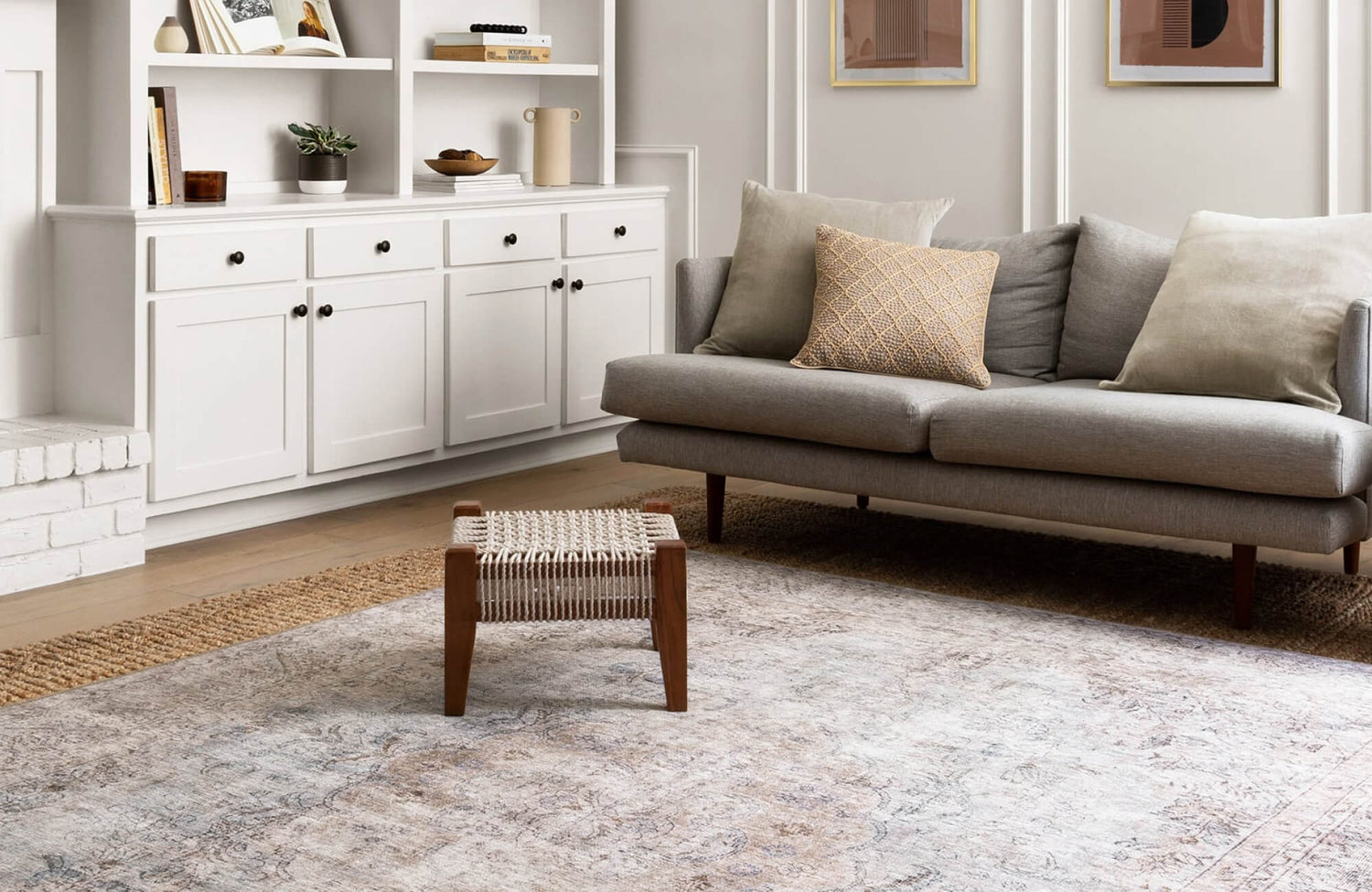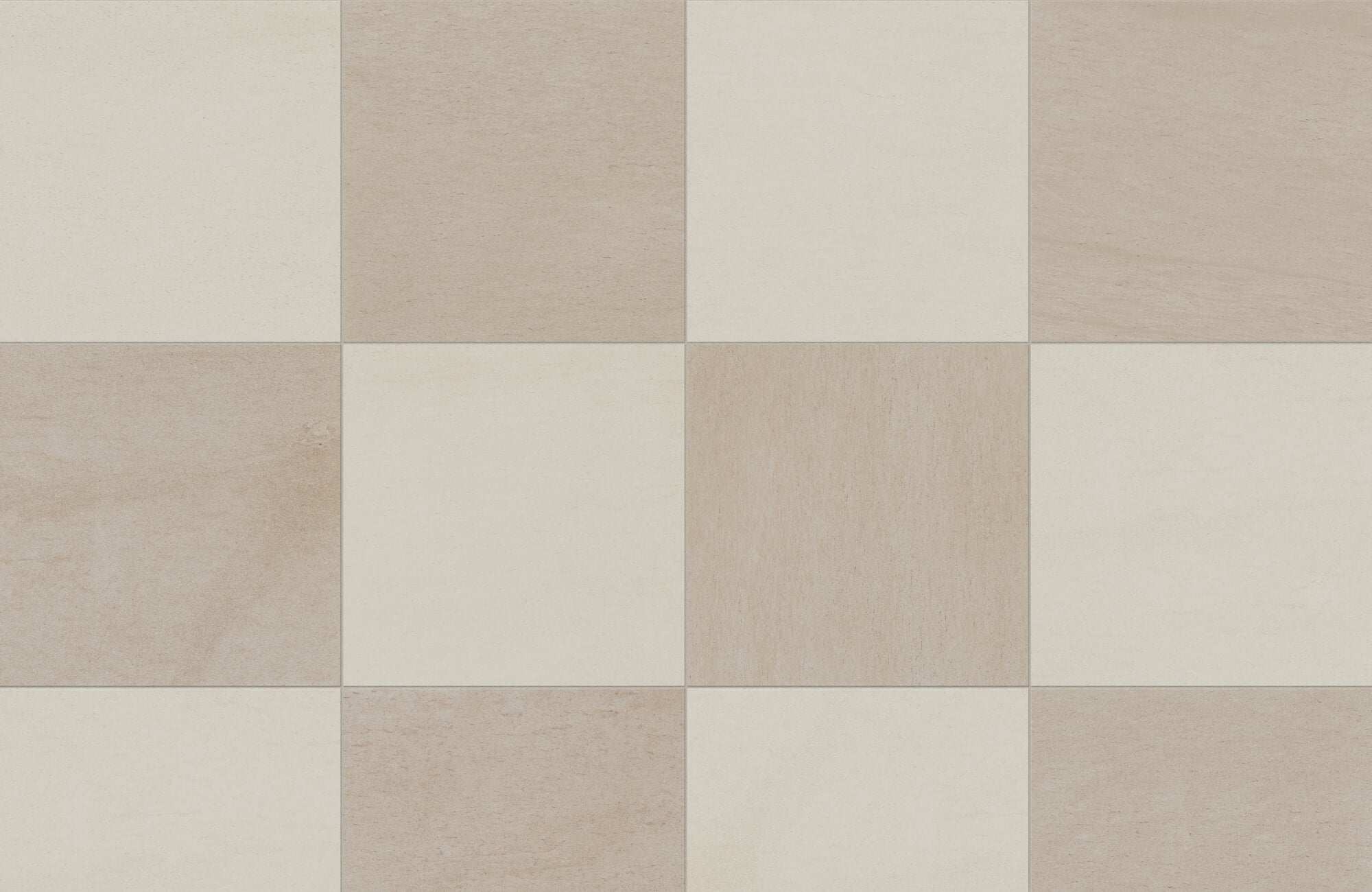The right rug can completely transform a room, making it feel more open and airy or warm and intimate. Elements like size, placement, color, pattern, and texture all play a role in how spacious or cozy a space may appear. By understanding these factors, you can create the perfect balance for your home.
In this article, we’ll explore how rugs can affect the way a room feels and help you determine whether a rug will make your space look larger or more confined. We’ll also break down key design principles and share practical tips to ensure your rug enhances your space, whether you're decorating a small apartment or a spacious living area.

How Rug Size Influences the Perception of Space
The size of a rug significantly influences whether a room feels open or confined. Choosing the right dimensions creates balance and ensures a cohesive, well-proportioned space. Understanding these effects can also help you select the ideal rug to enhance your room’s overall feel.
Large Rugs Expand the Space
A rug that extends well beyond the furniture can make a room feel more expansive by drawing the eye outward. This effect is especially useful in smaller spaces, where maintaining a continuous flow of flooring helps create a sense of openness. By covering more floor area, a large rug eliminates visual breaks, preventing the space from feeling disjointed.
For example, the Hutchinson Polyester Face Rug in Burgundy/Khaki, featured in the image above, is a great choice for achieving this effect. Its generous size and intricate design create a cohesive foundation, seamlessly connecting furniture pieces while adding warmth and depth to the space. In open-concept living areas, an oversized rug like this can also help define and unify multiple seating zones, making the layout feel more spacious and inviting.
Small Rugs Disrupt Flow
Placing a small rug in the center of a seating area can unintentionally break up the floor space, making the room feel more segmented and confined. This effect is even more pronounced when the rug doesn’t extend beneath key furniture pieces like sofas or beds, creating a sense of separation rather than cohesion. Additionally, a rug that sits isolated with large areas of exposed flooring around it can disrupt the room’s balance, making the space feel visually compressed and disconnected. Instead of enhancing the room’s proportions, an improperly placed small rug can draw attention to its limitations, making the space appear smaller than it actually is.

The Role of Rug Color in Spatial Perception
Color plays a key role in how spacious or compact a room feels. The right shade can enhance brightness and depth, making the space appear more open and airy. A carefully chosen rug color can also affect how natural and artificial light interact with the room, further influencing the perception of its size.
Dark Rugs Add Depth with the Right Balance
Deep hues like navy, charcoal, or chocolate brown add warmth and sophistication but can make a room feel smaller if used in a tight space with limited natural light. In larger, well-lit areas, these rich tones can create depth without overwhelming the space. Darker rugs can also help anchor a room, making it feel more intimate and grounded, but in confined spaces, they tend to absorb light and emphasize boundaries, resulting in a more enclosed feel.
For example, the Liddy Polyester Pile Rug in Graphite/Pearl, as shown in the image above, strikes a perfect balance between richness and versatility. Its dark grey tones add warmth and grounding to the space, while the ivory accents prevent it from feeling too heavy. In a bright, open room, this type of rug can also enhance depth and texture without making the area feel smaller, demonstrating how darker rugs can be both stylish and functional in the right setting.
Light Rugs Brighten and Open Up a Room
Lighter rugs, such as off-white, beige, or soft pastels, reflect light and can create an airy, open feel, making a space appear larger and more inviting. They are especially useful in darker rooms, as they can help brighten the environment and enhance the sense of expansiveness. By maximizing both natural and artificial light, these rugs can also reduce visual density, allowing the floor to recede rather than dominate the room. This effect is particularly beneficial in small or low-ceilinged spaces, where the goal is to amplify height and openness for a more spacious atmosphere.
Multicolor Rugs Add Depth Without Overwhelming
Multicolor rugs can add depth and character to a room while maintaining a harmonious look. When chosen carefully, they can introduce visual interest without making the space feel busy or overwhelming. A well-balanced mix of hues can also bring warmth and dimension, while a carefully curated color palette ensures the rug enhances the overall design rather than dominating it.

How Rug Patterns Impact Visual Space
Rug patterns play a key role in how a room feels, influencing its sense of openness, depth, and structure. The right design can enhance proportions, making a space feel more balanced and visually appealing. Whether you want to create a more expansive look or add definition, choosing the right pattern can help shape the overall feel of the room.
Intricate Patterns Can Shrink a Room
Highly detailed rugs with dense, intricate patterns can also create a visually cluttered look, making a room feel more enclosed. This effect is especially noticeable in smaller spaces, where too many complex details can overwhelm the floor area. When a pattern draws the eye in multiple directions, it can also disrupt the sense of openness and make the room appear busier than it actually is.
For example, the Quinton Wool Blend Rug in Ash, as shown in the image above, features a subtle, textured design that adds depth without overpowering the space. Its neutral tones and intricate pattern create a sense of balance, helping to ground the room while maintaining an open and airy feel. Choosing a rug with a delicate, well-proportioned pattern, such as this Quinton rug, allows you to introduce visual interest without making the space feel crowded or chaotic.
Large-Scale Patterns Maintain Openness
Large-scale patterns with subtle designs can enhance a room’s visual appeal while preserving a sense of openness and flow. This approach is ideal for maintaining an airy atmosphere while introducing texture and style. Broad, sweeping patterns in tonal variations can also create depth without overwhelming the room. By blending seamlessly with the surrounding décor, these rugs can help the floor feel like a natural extension of the space rather than a dominant focal point.
Linear Patterns Extend Visual Space
Stripes or geometric patterns that draw the eye in a specific direction can create the illusion of a longer or wider space. For example, horizontal stripes can make a narrow room feel broader, while vertical patterns can add a sense of height. This technique works especially well in hallways or elongated areas, where guiding visual movement enhances the room’s perceived dimensions. By strategically incorporating linear patterns, you can make a space feel more open and well-proportioned without altering its actual size.
How Rug Placement Affects the Room Size
Where you place a rug can significantly influence whether a room feels open and connected or segmented and confined. When positioned thoughtfully, it can create balance and cohesion, making the space feel more open and seamless. A strategically placed rug can also guide the eye naturally through the room, enhancing its overall flow and sense of expansiveness.
Centered Rugs Anchor the Room
A properly centered rug serves as a cohesive focal point, anchoring the seating area while keeping the space open and inviting. This works best when the furniture slightly overlaps the rug, creating a sense of connection and balance. By bringing all the elements of the room together, a well-placed rug can also enhance the overall flow, making the arrangement feel intentional and harmonious rather than scattered or disconnected.
Layered Rugs Add Depth Without Clutter
Layering a smaller decorative rug over a larger neutral base adds texture and warmth while keeping the space cohesive. This technique works especially well in large or open-concept areas, helping to define zones without making the room feel disconnected. By introducing contrast and variety, layering can also enhance visual interest while allowing the foundational rug to maintain the room’s scale and proportion.
Wall-to-Wall Rugs Maximize Openness
A large rug that nearly reaches the walls creates the illusion of a seamless, expansive floor, making the room feel more open. This approach works especially well in smaller spaces, where too much exposed flooring can create visual breaks. By covering most of the floor area, a wall-to-wall rug can also minimize contrast between the rug’s edges and the surrounding flooring, helping the space feel more unified and expansive.

How Rug Texture and Material Impact the Feel of a Room
The feel of a room is greatly influenced by the texture and material of a rug, affecting both its comfort and visual openness. The fibers and weave can affect how the rug absorbs or reflects light, which in turn influences the sense of openness. Selecting the right combination of texture and material can also help create a balanced atmosphere, making the space feel more open, cozy, or well-proportioned depending on the design.
Low-Pile Rugs Keep the Space Open
Low-pile and flat-weave rugs can create a clean, streamlined look that makes a space feel more open. This is especially useful in smaller rooms, where thicker textures can make the area feel cramped. Their smooth, even surface also helps reduce visual clutter, keeping the room balanced and inviting.
For example, the Hutchinson Polyester Face Rug in Burgundy/Denim, shown in the photo above, demonstrates how texture and material influence a room’s feel. With its 0.13-inch pile height, this low-profile rug adds warmth and softness without overwhelming the space. Its smooth, lightweight design helps maintain an open and airy atmosphere, making it a great choice for those looking to enhance comfort while keeping the room feeling spacious.
Plush Rugs Add Warmth but Can Feel Dense
Soft, thick rugs bring warmth and comfort, making a space feel inviting and cozy. However, their dense texture absorbs light, which can create a heavier visual effect. This makes them ideal for larger rooms where a sense of intimacy is desired. While high-pile rugs add a rich, tactile element, they can make smaller spaces feel more enclosed. Finding the right balance of texture and proportion can also ensure a plush rug enhances the room without overwhelming it.
Natural Fiber Rugs Create a Light and Airy Feel
Rugs made from natural fibers like wool, jute, or sisal can add texture while maintaining a light, breathable quality in a room. Their organic weaves allow for subtle variations in tone and depth without overwhelming the space. These materials also help reflect light, contributing to a more open and inviting atmosphere, making them a great choice for balancing comfort and spaciousness.
The Right Rug Choice Can Transform a Room
The rug you choose does more than enhance style, it shapes how spacious or cozy your space feels. Size, design, and placement also play a role in whether a rug makes a room look bigger or smaller, helping you to create the right balance. With thoughtful choices, you can open up a space, define different areas, and set the perfect atmosphere. Whether you want to make a room feel larger or create a warm, inviting retreat, the right rug can make all the difference.
At Edward Martin, we specialize in helping you find the perfect rug to complement your space. Our expert design services ensure that every detail, from color and pattern to size and placement, works seamlessly to enhance your home’s overall aesthetic. Contact us today to explore our collection and receive personalized recommendations tailored to your style and needs!








